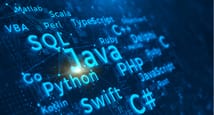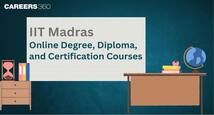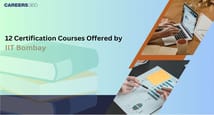- Introduction to Alias
- What is Design?
- Navigation Tools and UI
- About CAID/CAD Design
- Import Sketches as Canvases or Images
- Select Basic Object and View
- Introduction: Basic U’s, Curve Tools, and V’s Spans
- Work with Layers
- Creating Symmetrical Curves
- Curve transformation, curve fillet creation, offset curves and curve sections
Automotive Class A Surfacing using ALIAS
Join Automotive Class A Surfacing using ALIAS course to understand platforms of generating class A surfaces using ...Read more
Beginner
Online
12 Weeks
Quick Facts
| particular | details | |||
|---|---|---|---|---|
|
Medium of instructions
English
|
Mode of learning
Self study, Virtual Classroom
|
Mode of Delivery
Video and Text Based
|
Course overview
The Automotive Class A Surfacing using ALIAS Training by Skill Lync focuses on understanding and learning how to use the ALIAS and design surface of automobiles. The computer-aided industrial design software is in predominant use in automotive design, and industrial design for generating Class A surfaces through NURBS modelling methods and Bezier surfaces.
The Automotive Class A Surfacing using ALIAS Online Course covers the specialised features of the software such as CAID/CAD Design, controlling geometry, NURBS and slab modelling, and surface editing. The curriculum also familiarises you with the different continuities and various forms of concept modelling, technical surfacing, and surface modelling along with reverse engineering.
The Automotive Class A Surfacing using ALIAS Programme is a six-month training which provides intensive knowledge about using ALIAS for automotive class A surfacing via industry-based projects. Skill Lync will assist you with video lectures, in-course assignments, and exercises to help strengthen your understanding. After finishing the programme, you will receive a course completion certificate. Students who complete with good performance among the top 5% of the batch will get a certificate of merit.
The highlights
- Continual Learning
- Community Forum
- Project experience on Autodesk Alias
- 100 % online mode
- Course completion certificate
- Individual and group video support
- Merit Certificate
- Email/WhatsApp support
- Project Portfolio
- Industry-grade projects
- Project-based learning
Program offerings
- Certificate from skill lync
- Telephone support
- Add-ons industry projects
- Lifetime access with a premium plan
- Community forum
- Dedicated support engineer
- Experienced instructors
- Merit certificate
Course and certificate fees
The fees for the course Automotive Class A Surfacing using ALIAS is -
| Head | Amount |
| Programme fees | Rs. 40,000 |
certificate availability
Yes
certificate providing authority
Skill Lync
Who it is for
The Automotive Class A Surfacing Using ALIAS Course by Skill Lync is suitable for the following candidates:
- Students in Aerospace, Mechanical, or Automotive engineering.
- Graduates who wish to gain industry-level project experience on Autodesk Alias
Eligibility criteria
To enrol in the Automotive Class A Surfacing using ALIAS programme you must be a fresher/practising mechanical, automotive or aerospace engineer, or a student pursuing a degree in the same fields.
Candidates need to complete the weekly assignments, course work, industry-grade projects, and exercises to get the course completion certificate. Students require finishing in the top 5% of the batch towards the end of the programme to receive the merit certification.
What you will learn
After finishing the all-inclusive modules of the Skill Lync Automotive Class A Surfacing using ALIAS, you will have:
- Acquired an extensive skill set to be able to use the features of the ALIAS software and apply them in any real-life industry-based projects
- Widespread knowledge about automotive and industrial design to generate Class A surfaces using Bezier surface and NURBS modelling method
The syllabus
Digital Design Foundation 1, Curves Introduction and Why Use Curves?
Digital Design Foundation 2,Controlling and Building Simple Geometry
- Control Mirroring, Duplicating objects, Geometry, and Grouping
- Object Lister, Concept Sculpting, CV Sculpting
Digital Design Foundation 3, Introduction to Different Continuities and Surface Editing
- Surface Toolbar, Shade, and Edit
- Surfaces vs Solids
- NURBS and Slab Modelling
- Surfaces from Bezier Surfaces, Boundaries
- Radius and Chord Fillet
- Parent surfaces: Primary and secondary surfaces
- Sharp Surface Models
- Primary Fillets, Secondary Fillets, Blends
Introduction: Different Continuities
- G0 - Positional
- G1 - Tangent
- G-2 - Curvature
- G-3 – Curvature
Concept Modelling: Workflow 1
- Introduction
- Dimensions
- Overlay canvasses for presentation and design
- Introduction: Construction Options
- Surface distribution and Modelling approaches
- Build with surface tools and curves
- Work Accurately
Concept Modelling: Workflow 2
- Understanding Surface by Three-quarter views
- Overlay Canvas for design
- Build with surface patching and curves patching
- Surface distribution and Modelling approaches
Concept Modelling: Workflow 3
- Understand component design
- Work on the Creative side: Imagine surfaces
- Hypothetical surfaces for creating patch layout
Concept Modelling: Workflow 4
- Understand component design
- Work on the Creative side and imagine surfaces
- Hypothetical surfaces for creating patch layout
Concept Modelling :Workflow 5
- Understand patches, surfaces, and layout
- How to divide surfaces
- Make your way to the top
- Where to start with building techniques?
- Parent Patches- Foundation
Technical Surfacing(A-Class Knowledge)
- Introduction: Technical Surfacing
- Surface Evaluation - Comb Plots and Cross Sections
- Surface Evaluation - Reflection Lines
- Transforming CV by Fine-Tuning the Control Points
- Construction Tolerances b/w Surface Patches
- Work with Trimmed Edges – Align project and fit curve
Class B Surfaces Modelling
- Fulfil every parameter
- Patch construction
- Proper passing of tangent, positional, and curvature surfaces
- Patches with proper cv’s layout
- Making way to a Class-A Model
- Properly evaluated surfaces
Reverse Engineering
- Introduction
- Work with Mesh Data
- Create a surface onto a Mesh
- Work with Sections
- Reference Manager to Handle Large Data Sets
- Display and Analyse Deviation
Present you Design
- Rendering: Alias
- Shades, Hardware Rendering, Environments, Lighting,
- Create Image Files
Admission details
Automotive Class A Surfacing using ALIAS online certification course application is filled through this process:
Step 1. Go to the official Skill Lync website and search for the ‘Automotive Class A surfacing using ALIAS’ online training
Step 2. Click on the ‘Enrol Now’ option, choose the appropriate access plan and proceed.
Step 3. Fill your email address and contact details in and a new page will open.
Step 4. Pay the programme fee, after which you’ll get complete access to the learning material.
Filling the form
To be able to enrol in the Automotive Class A Surfacing using ALIAS online course, you won’t have to fill out a lengthy application form. Just go to Skill Lync’s website, choose the programme, and provide your details. Choose a preferred payment mode to pay and complete the process.
How it helps
After completing the Automotive Class A Surfacing using ALIAS Online course, the students will develop a thorough skill set of utilising the features of the ALIAS Software. Candidates will be able to generate class A surfaces using Bezier surface and NURBS modelling method in automotive design and industrial design projects.
The Automotive Class A Surfacing using ALIAS online training will give you an edge over your fellow employees by instilling in you with all the vital aspects required to use the function and features of ALIAS. You will have more chances of getting scholarships during your MS application. The course-completion certificate further enables you to apply in top companies requiring automotive design and industrial design proficiency.
FAQs
Who are the instructors for the programme, and what is the learning material?
The instructors are well-trained industry experts working in Fortune 500 companies. Online lectures, recorded content, assignments, industry-grade projects, and exercises comprise the course material.
Are there any prerequisites for this programme?
You must have a B.E/Btech or pursuing the same in Mechanical and Automotive Engineering.
What kind of support will I get if I have any doubts?
Skill Lync provides devoted support engineers, accessible whenever you need assistance with any queries. The communication can take place over video conferencing, WhatsApp, message/calls, individual online sessions and in-person as well.
What are the advantages of pursuing this course?
The Automotive Class A Surfacing Using ALIAS Training Course offers essential hands-on experience in the usage and understanding of ALIAS, along with analysis of all the functions and tools available on the software.
What makes these courses differ from the one I have learnt in college?
These courses are constructed after rigorous consultation with industry leaders, and they help academia and industry go hand-in-hand. The modules are designed to include real-world applications and extensive industry-standard projects.
Will the software be provided with the course?
Skill Lync will not provide the software.
Articles
Popular Articles
Similar Courses


Self-Driving Cars with Duckietown
ETH Zurich via Edx


Dynamics and Control
Polytechnic University of Valencia, Valencia via Edx


Electric Vehicles and Mobility
ParisTech, Paris via Coursera


Automotive Lighting Design using CATIA V5
Skill Lync


SolidWorks Boeing 747 Design
Skill Lync


Introduction to Control of Electric Vehicle
Skill Lync
Courses of your Interest

3D Premium Animation and VFX
iNCUBE8 VFX Academy

Theory Of Computation
IIT Kanpur via Swayam

Residential Design
The Designer's Class

Heritage Jewellery by Amrapali
The Designer's Class

Jewellery Design by Outhouse
The Designer's Class

Lab Grown Diamonds by Limelight
The Designer's Class

Business of Jewellery by De Beers Forevermark
The Designer's Class

Fine Jewellery
The Designer's Class
More Courses by Skill Lync

Advanced CFD Meshing using ANSA
Skill Lync

Basics of CATIA V5
Skill Lync

Embedded C Essentials
Skill Lync

Introduction to Automotive Electronics
Skill Lync

Reinforced Cement Concrete Design
Skill Lync

Construction Planning using Primavera P6
Skill Lync

Business Analyst Fundamentals for Beginners
Skill Lync


 Brochure
Brochure Enquire
Enquire












